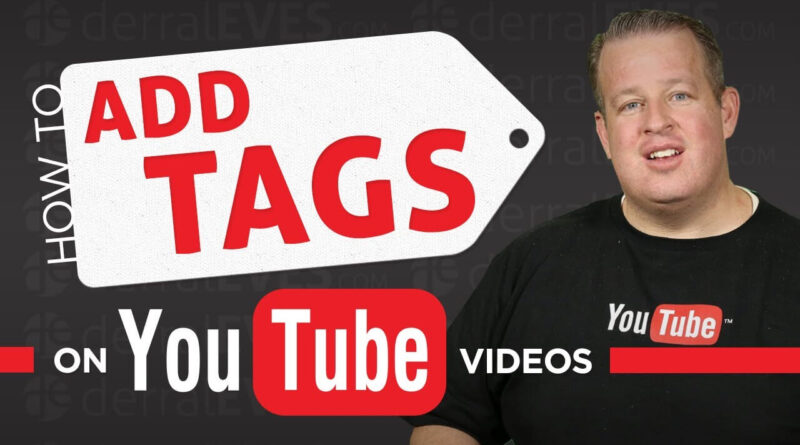Tags on YouTube: what are they and how to use them
The most effective way to tag your videos on YouTube is to use tools to generate relevant tags for your target audience. You can also use an extension in your browser to find out what tags your competition uses.
Content marketing is at its peak. This scenario is a golden opportunity for brands to gain visibility. Video has become the star content format , making it the best channel to communicate with your audience.
When we talk about video we automatically think of YouTube, and with good reason. This platform is the second most used search engine after Google . So, if you want to develop an effective video marketing strategy , you must create your own YouTube channel.
Now, how to position your videos on this platform? There are several optimization techniques with which you can improve visibility, but today we want to talk about a little-known strategy: YouTube tags .
WHAT ARE YOUTUBE TAGS?
Table of Contents
YouTube offers you the ability to tag your videos. This way you get to improve the visibility of your multimedia files because, as you already know, robots do not interpret images but words.
YouTube tags help you rank higher in search results within the channel. In addition, these words or phrases that are added in the description allow your audience to know what the content of the video is.
Now that you know the importance of tags on YouTube, let’s see how to generate the best keywords to position your videos .
TAGS ARE NOT HASHTAGS
YouTube tags are important, and for that reason, you must follow a strategy to use the most appropriate ones. Here are some practical tips for finding the keywords that will increase the impact of your videos .
First of all, you shouldn’t confuse tags with hashtags. The latter differ because they have the # character at the beginning of the word and do not contain spaces (#optimizatusvideos). Tags can be a word or a longer expression. They are entered separated by commas (optimize videos on YouTube, videomarketing).
Hashtags are used for time-bound events. For example, for a product launch or for a promotion. Tags are permanently effective because they help YouTube understand the content of your video .
HOW TO ADD TAGS TO YOUTUBE VIDEOS?
Adding tags to YouTube videos is a very simple process:
- You access your user account and select the channel where you want to upload the video.
- Add the video you want to post on your channel. If you want to tag an already published video, select it to edit the “Video details” section.
- In “Video details” you have fields to include the title, the description, the thumbnails and, finally, the labels.
- Decide which keyword best describes your content and add it. Include more keywords separated by commas. It is convenient that you order them according to their importance.
- Combine single word and long tail tags to describe the overall topic.
- Include some keywords that define the subtopics.
For example, if your video is a tutorial for cutting a dress pattern, you can enter “dress pattern” as the main tag. As subtopics, you can add others such as “drawing patterns for clothes”, “learning to cut patterns”, “sewing tutorials”, “pattern making”, “learning to sew”.
TIPS FOR CHOOSING THE MOST EFFECTIVE LABELS
First of all, you should keep in mind that the first tag of the video is the one that has the most relevance to the YouTube algorithm .
A good way to learn how to tag your videos well is to analyze what the competition is doing . However, users cannot see the labels. Only the YouTube robot interprets them to display the search results.
So, how do you know what tags your competition’s videos have? The answer is simple: with an extension in your browser .
Do a search in the Chrome Web Store or Firefox Extensions and install the one that suits you the most. You have quite a few options, although one of the most popular is Tags for YouTube . Once installed in your browser, the tags will be displayed below the description of the video .
Another way to find out which keywords work best for your content is to use a YouTube tag generator . You can try the ones we mentioned below.
1. YouTube TagsGenerator
YouTube Tags Generator is a specific tool offered by Keyword Keg and one of the most popular. Just by entering a target keyword you will get valuable data such as search volume, competition, positioning difficulty, trends, suggestions related to the term and much more . It is a freemium tool. Its free version offers you 10 results and the paid version, unlimited data.
2. RapidTags
With a clean and simple interface, RapidTags generates a complete list of tags that you can copy with one click without the need to register . As a registered user, you have access to more features, such as traffic volume, estimated visits and channels that include the same label. In addition, it has a payment plan with more tools.
3. KeywordTool
Keyword Too l is another freemium tool that does not provide statistical data in its free version. However, in addition to keyword suggestions, it allows you to filter the results by including or excluding terms . With the paid plan you have access to data such as search volume, trends and level of competition.
4. VidIQ
VidIQ is a YouTube certified online tool that offers free and paid features. It can also be used as a Chrome extension. With an interface similar to Hootsuite, it displays keywords, search volume, competition, and analytics . The only requirement to access the basic plan is to register on the web.
Now that you know how to tag your videos, you can start to position your multimedia content on YouTube . With some practice, in no time you’ll improve your channel’s visibility and gain subscribers.
We forget that there are more techniques to improve your content strategy on YouTube and increase the diffusion and reach of your publications.



